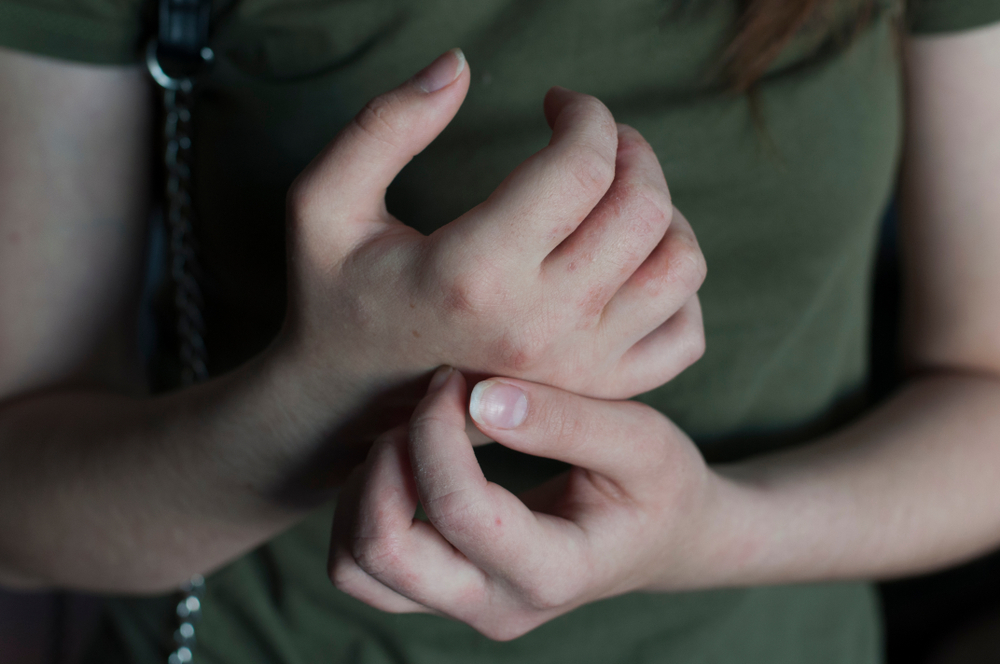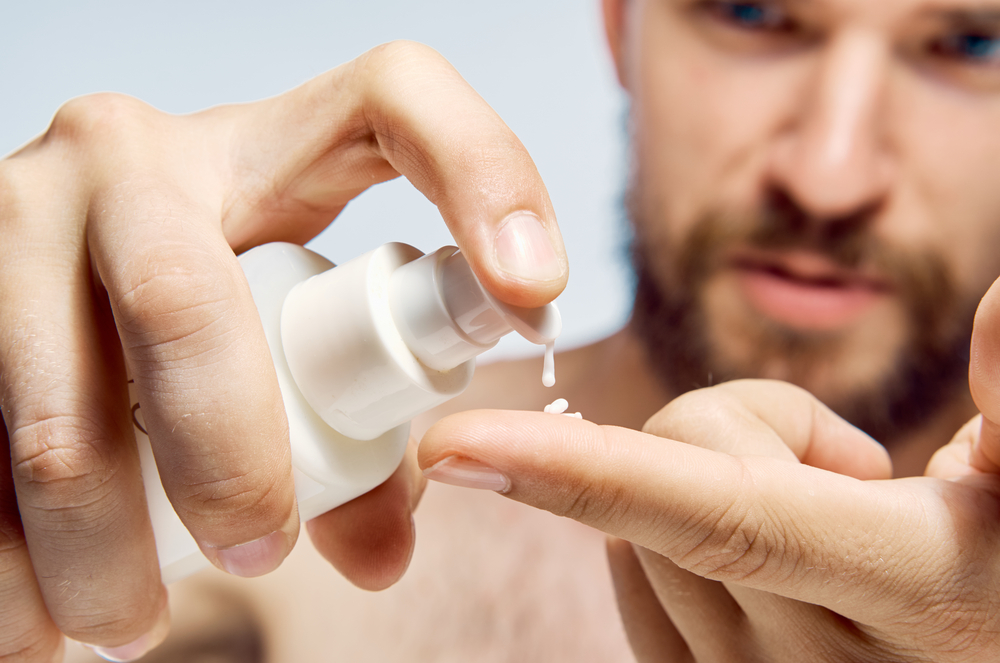- Eczema and psoriasis both cause the skin to become red and itchy.
- Eczema often begins in infancy or childhood, whereas all forms of psoriasis develop during adolescence or young adulthood.
- Because there are no known cures for either condition, treatment is aimed at managing symptoms and preventing outbreaks.
Psoriasis and eczema are skin conditions characterized by redness, inflammation, and itching. Although both conditions produce similar symptoms and are often treated the same way, they are different ailments with disparate causes.
Because psoriasis and eczema appear much the same, it usually takes the trained eye of a dermatologist to tell them apart. Here, we break down these two skin conditions to help you differentiate between them.
What is eczema?
Eczema, also known as dermatitis, is a collection of conditions that cause red, irritated skin. It is very common: a 2007 study found that 31.6 million Americans met general symptom criteria for eczema, and 17.8 million met the criteria for atopic dermatitis (AD), a type of eczema.
There are six types of eczema, each with its own cause and typical age of onset.
Atopic dermatitis (AD)
Atopic dermatitis is characterized by chronic flare-ups of red and itchy skin. The itching is often worse at night. It occurs most commonly in children, but can appear at any age. Out of all the people with this condition, 90% develop it before the age of five. For about half of those who get it during childhood, symptoms persist into adulthood.
AD can accompany hay fever or asthma. For some children, eczema is also related to food allergies. AD in particular is thought to result from a genetic variation that alters the skin’s ability to protect itself against bacteria and other potential environmental irritants.
Symptoms of atopic dermatitis:
- Dry skin
- Itching, which is often worse at night
- Red or brown-grey patches, especially on the hands and feet, ankles, wrists, neck, upper chest, eyelids, inside bends of elbows or knees and, in babies, on the face and scalp
- Small raised bumps that leak fluid and crust over when scratched
- Thickened, cracked, scaly skin
- Skin may also be swollen and raw
Contact dermatitis
According to the American Academy of Dermatologists (AAD), contact dermatitis refers to a rash caused by contact with something in the environment. Almost everyone has had contact dermatitis at some point in their lives.
There are two variants of this type of eczema: allergic contact dermatitis and irritant contact dermatitis.
Allergic contact dermatitis occurs when the skin comes in contact with something that the body is allergic to.
Common causes include:
- Poison ivy
- Nickel
- Makeup ingredients
- Metals in jewelry, particularly costume jewelry
- Latex, such as in gloves
Irritant contact dermatitis commonly develops when contact with something irritates the skin. The irritant may be as innocuous as water, as from too-frequent hand washing, to caustic and toxic substances like battery acid or bleach.
» Do you have dry skin on your eyelids? Learn more about eyelid dermatitis and how to treat chronically dry eyelids.
Dyshidrotic eczema
In dyshidrotic eczema small, painful, and itchy blisters periodically form on the hands and feet. The blisters last for about two or three weeks, after which the skin remains red, dry, and cracked.
Neurodermatitis
Neurodermatitis starts with an itch. The itch can be anywhere on the body but mostly commonly occurs on arms, legs, or the back of the neck. It can also occur in the regions around the anus and genitals.
The itch comes and goes but tends to be worse when the patient is relaxing or sleeping. It often leads to intense scratching, which in turn irritates the skin. Stress may play a role in the development of neurodermatitis.
Nummular dermatitis
Also called discoid eczema, this form of dermatitis results in coin-shaped or oval sores. It often appears after injuries like burns, friction injuries, or insect bites. The patient may have one patch of sores or many, each one lasting for weeks or months at a time.
Men are more commonly affected by nummular dermatitis than are women. Though men tend to have their first attack between 55 and 65 years of age, women frequently have their first outbreak at a much younger age, typically when they are teens or young adults.
Stasis dermatitis
Stasis dermatitis occurs when there is poor circulation. This type of eczema often occurs in the lower legs and may develop in one or in both legs. It can also occur elsewhere on the body, but this is rare.
As people age, the valves in the veins of the lower legs sometimes become weak, resulting in a condition called venous insufficiency. Although not everyone with venous insufficiency will develop stasis dermatitis, it is a risk factor and should be monitored.
The first sign of stasis dermatitis is often swelling around the ankle or ankles, followed by discolored skin and varicose veins.
What is psoriasis?
Psoriasis is an immune system-related skin disorder in which new skin cells are produced too rapidly, resulting in an overgrowth of dead skin cells. Normally, the skin grows new cells about once a month, but patients with psoriasis grow new skin cells every two days or so.
Unlike some forms of eczema, psoriasis most commonly develops between the ages of 15 and 35. But much like some eczemas, psoriasis has a genetic component.
There are multiple types of psoriasis. However, in contrast to eczema, there is no variation in the age of onset between the types. Likewise, all types of psoriasis have the same cause.
Plaque psoriasis
The most common form of this skin disease, plaque psoriasis, is characterized by itchy red patches covered with a grayish build-up of dead skin cells. The lesions appear most often on the scalp, knees, elbows, and lower back.
Guttate psoriasis
Guttate psoriasis is the second most common form of this condition — about 10% of people who have psoriasis have this type. It appears as small, dot-like lesions and is often triggered by strep infections.
Inverse psoriasis
Inverse psoriasis presents as very smooth, shiny red lesions in the folds behind the knee, under the arm, or in the groin. If a patient has inverse psoriasis, they may have other types of psoriasis at the same time.
Pustular psoriasis
Pustular psoriasis takes its name from the white pustules that develop, most often, on the patient’s hands and feet. The pustules are surrounded by reddened and inflamed skin and are filled with non-infectious pus made up of white blood cells.
Erythrodermic psoriasis
Erythrodermic psoriasis is the most severe form of psoriasis. It causes a widespread, fiery redness over most of the body. There is severe itching and pain, and scratching can make the skin come off in sheets. Fortunately, it’s rare, occurring in only 3% of people with psoriasis. However, it can be life-threatening.
Psoriasis triggers
Like other chronic conditions, psoriasis attacks can be brought on by various environmental triggers. According to the National Psoriasis Foundation, psoriasis triggers include:
- Infections, including strep throat and upper respiratory infections
- Dry air and skin
- Any skin injury, such as bug bites, cuts, burns
- Stress
- Sunburn
The following medications are also known to trigger psoriasis flare-ups:
- The anti-malaria drugs Plaquenil and Quinacrine
- The high blood pressure beta blocker Inderal
- The psychiatric drug lithium
- Quinidine, a heart medication
- Indomethacin, a non-steroidal anti-inflammatory drug
Treatment for eczema and psoriasis
Since there is no cure for either eczema or psoriasis, treatments are aimed at relieving symptoms and either preventing outbreaks or reducing their frequency.
This can include any or all of the following:
- Avoiding harsh soaps
- Moisturizing the skin
- Wet wrap therapy
- Using medicated creams
- Avoiding sunburn
- Bleach baths to reduce AD flare-ups
- Using the appropriate insect repellents to prevent bug bites
- Topical medications to reduce inflammation such as corticosteroids and retinoids
- Drugs that suppress the immune system, particularly of use for psoriasis patients
- Phototherapy, in which ultraviolet light is shined on the affected areas
» Speak with a dermatologist for advice on treating eczema and psoriasis.Get valuable tips from our best medical review team.









